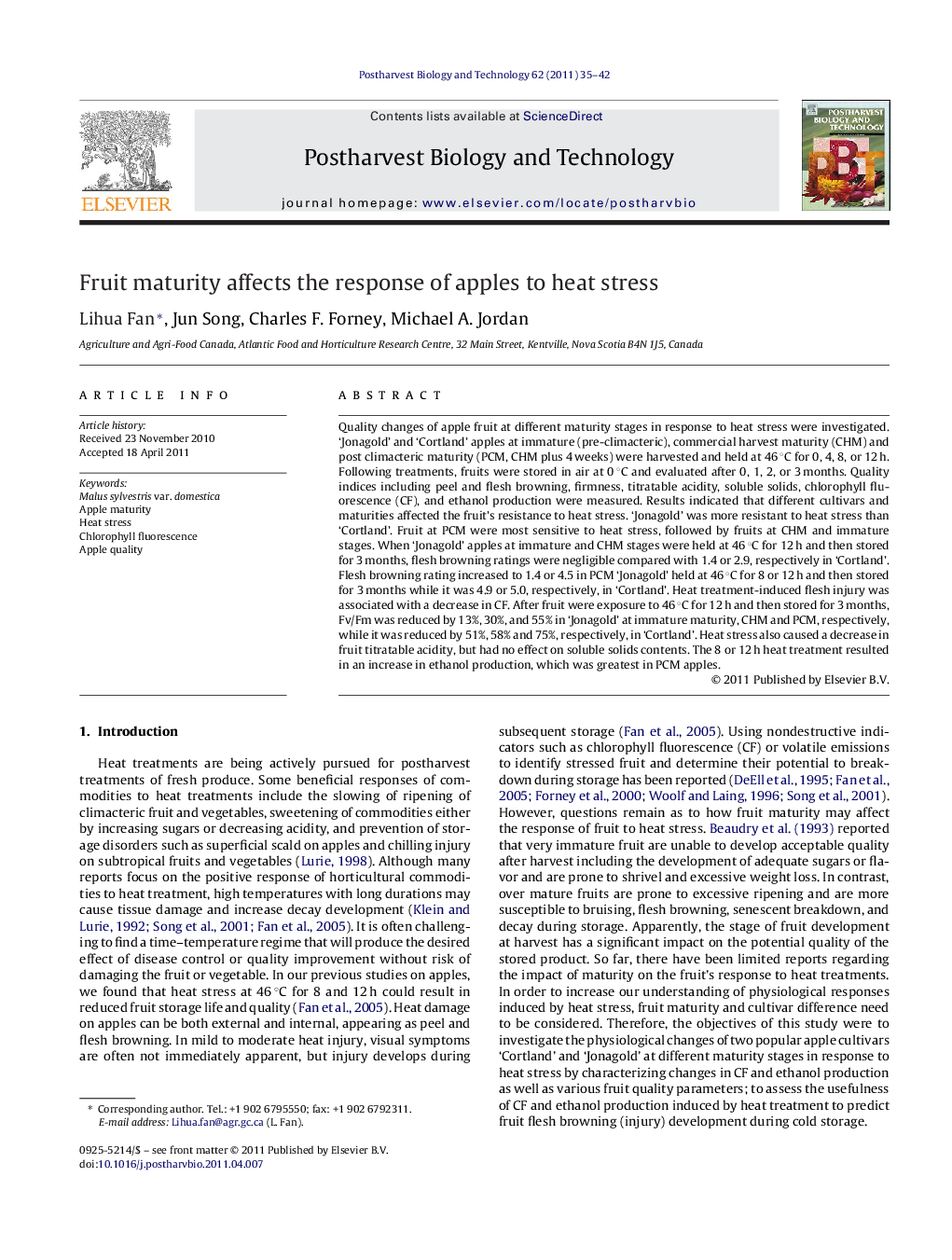| Article ID | Journal | Published Year | Pages | File Type |
|---|---|---|---|---|
| 4518703 | Postharvest Biology and Technology | 2011 | 8 Pages |
Quality changes of apple fruit at different maturity stages in response to heat stress were investigated. ‘Jonagold’ and ‘Cortland’ apples at immature (pre-climacteric), commercial harvest maturity (CHM) and post climacteric maturity (PCM, CHM plus 4 weeks) were harvested and held at 46 °C for 0, 4, 8, or 12 h. Following treatments, fruits were stored in air at 0 °C and evaluated after 0, 1, 2, or 3 months. Quality indices including peel and flesh browning, firmness, titratable acidity, soluble solids, chlorophyll fluorescence (CF), and ethanol production were measured. Results indicated that different cultivars and maturities affected the fruit's resistance to heat stress. ‘Jonagold’ was more resistant to heat stress than ‘Cortland’. Fruit at PCM were most sensitive to heat stress, followed by fruits at CHM and immature stages. When ‘Jonagold’ apples at immature and CHM stages were held at 46 °C for 12 h and then stored for 3 months, flesh browning ratings were negligible compared with 1.4 or 2.9, respectively in ‘Cortland’. Flesh browning rating increased to 1.4 or 4.5 in PCM ‘Jonagold’ held at 46 °C for 8 or 12 h and then stored for 3 months while it was 4.9 or 5.0, respectively, in ‘Cortland’. Heat treatment-induced flesh injury was associated with a decrease in CF. After fruit were exposure to 46 °C for 12 h and then stored for 3 months, Fv/Fm was reduced by 13%, 30%, and 55% in ‘Jonagold’ at immature maturity, CHM and PCM, respectively, while it was reduced by 51%, 58% and 75%, respectively, in ‘Cortland’. Heat stress also caused a decrease in fruit titratable acidity, but had no effect on soluble solids contents. The 8 or 12 h heat treatment resulted in an increase in ethanol production, which was greatest in PCM apples.
► Quality changes of apple fruit at different maturity stages were studied. ► Cultivar and fruit maturity affected their resistance to heat stress. ► Post climacteric fruit were most sensitive to heat stress. ► Measurement of chlorophyll fluorescence could be used to predict fruit injury.
